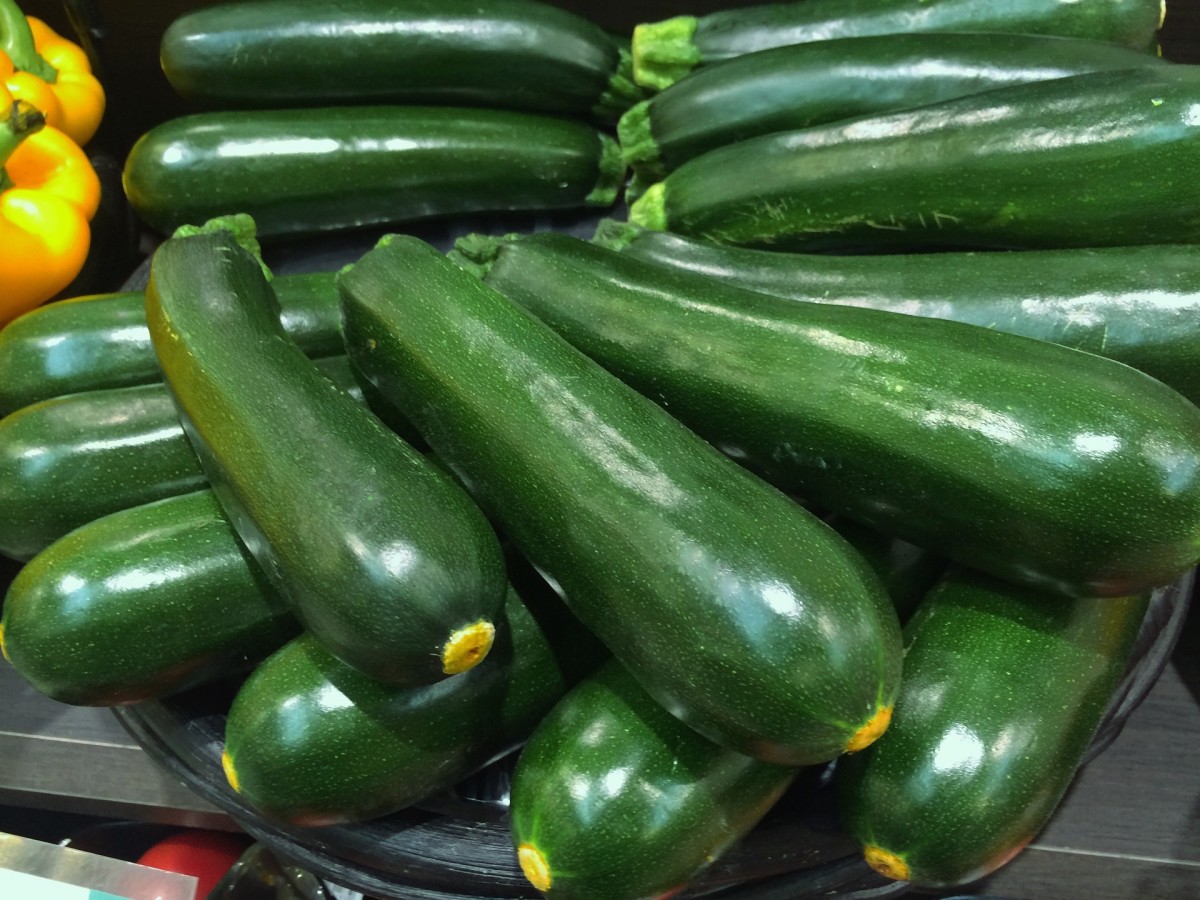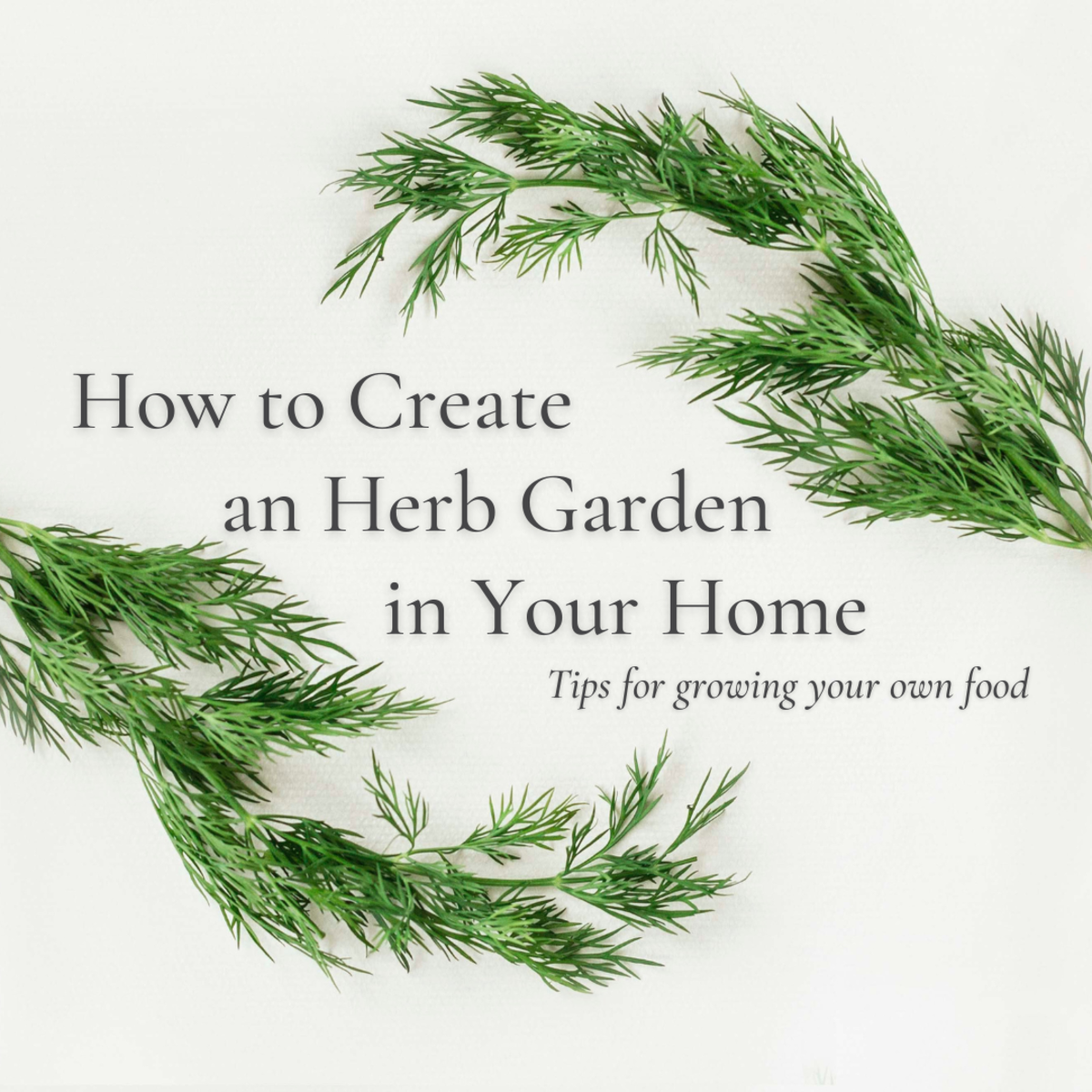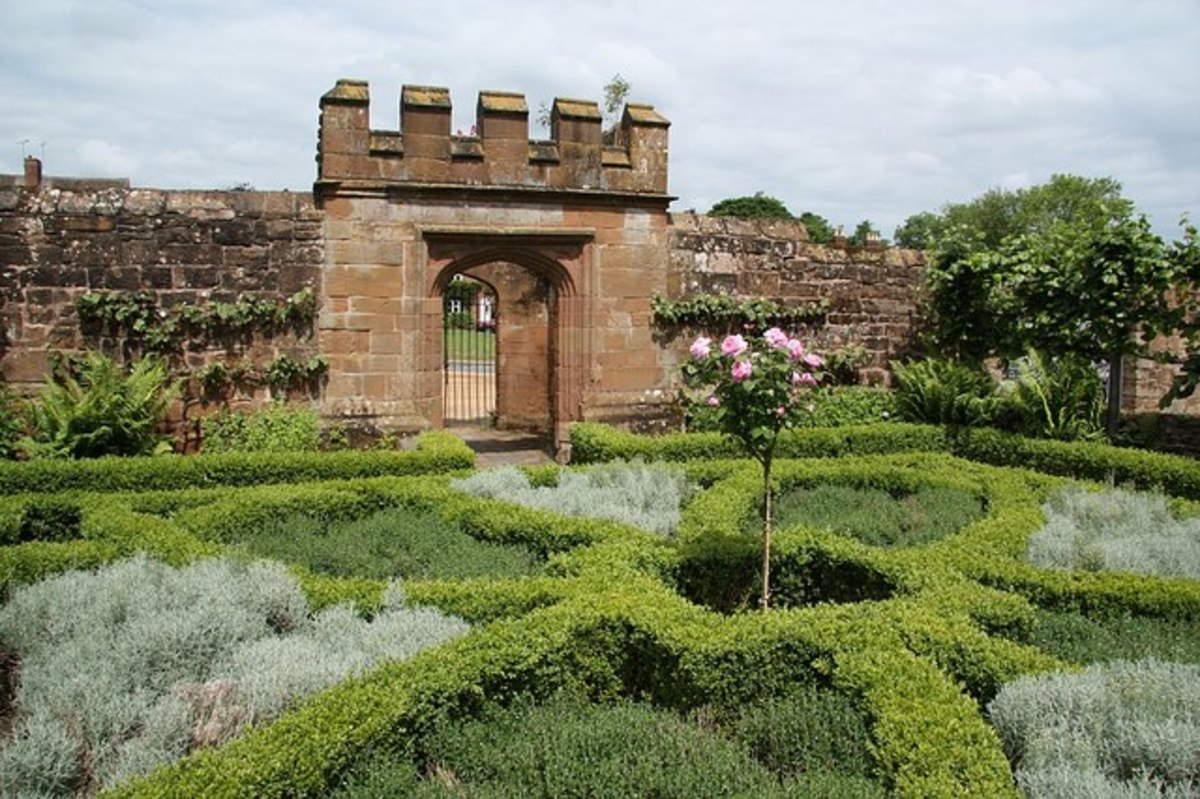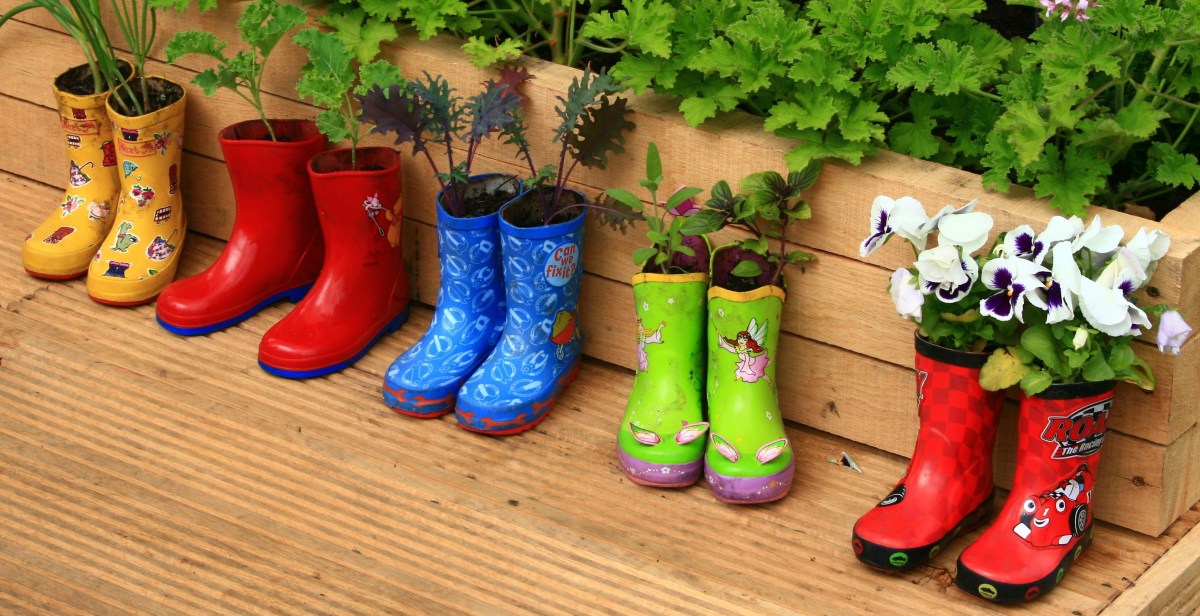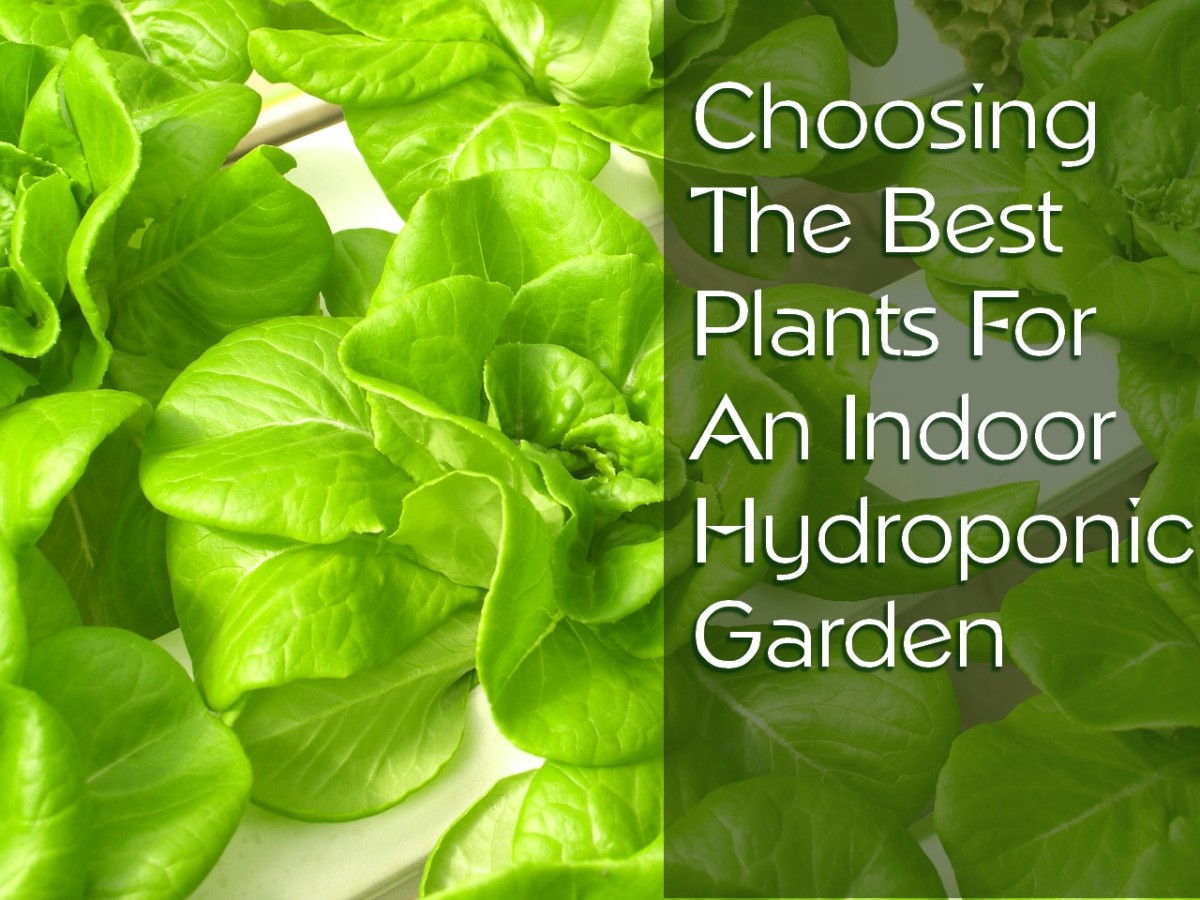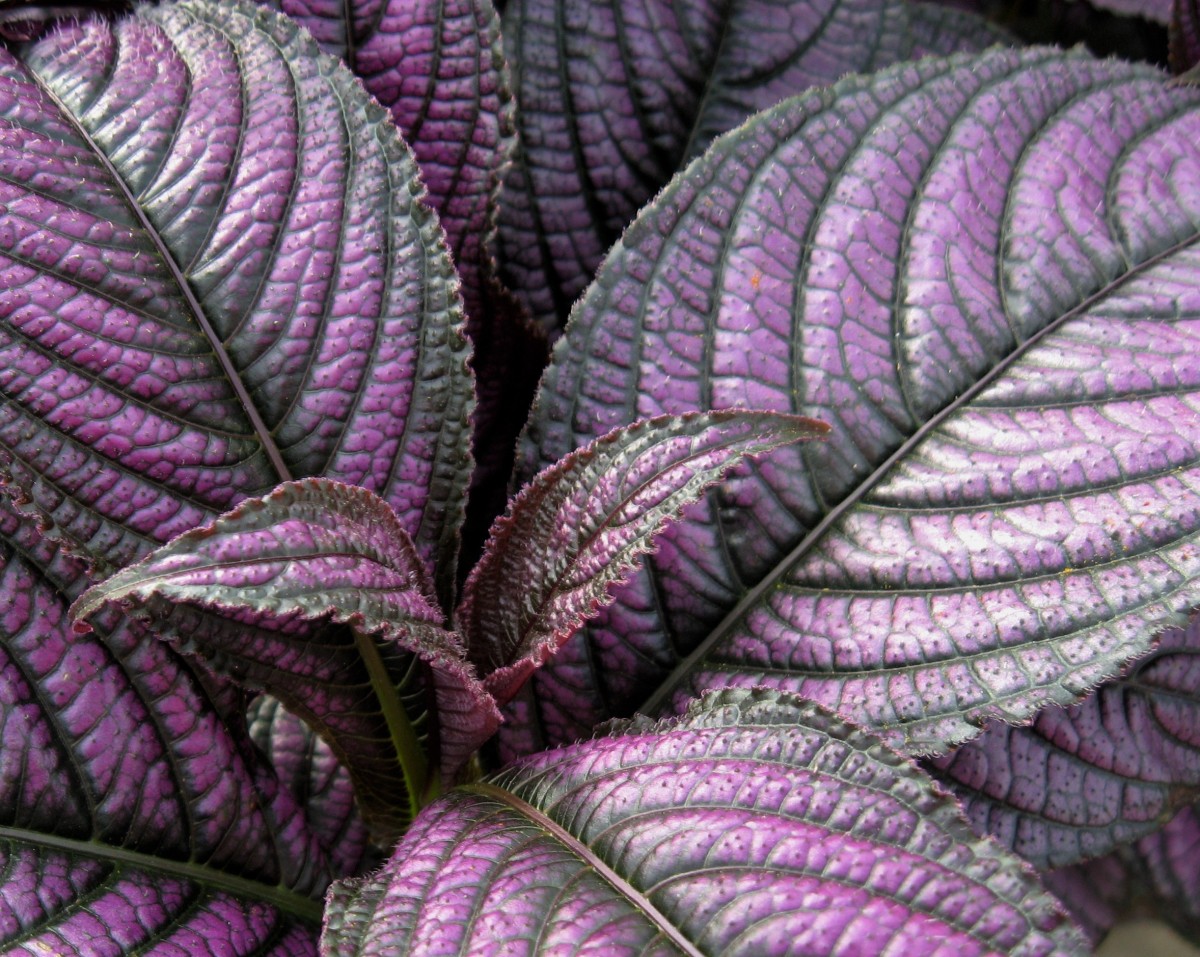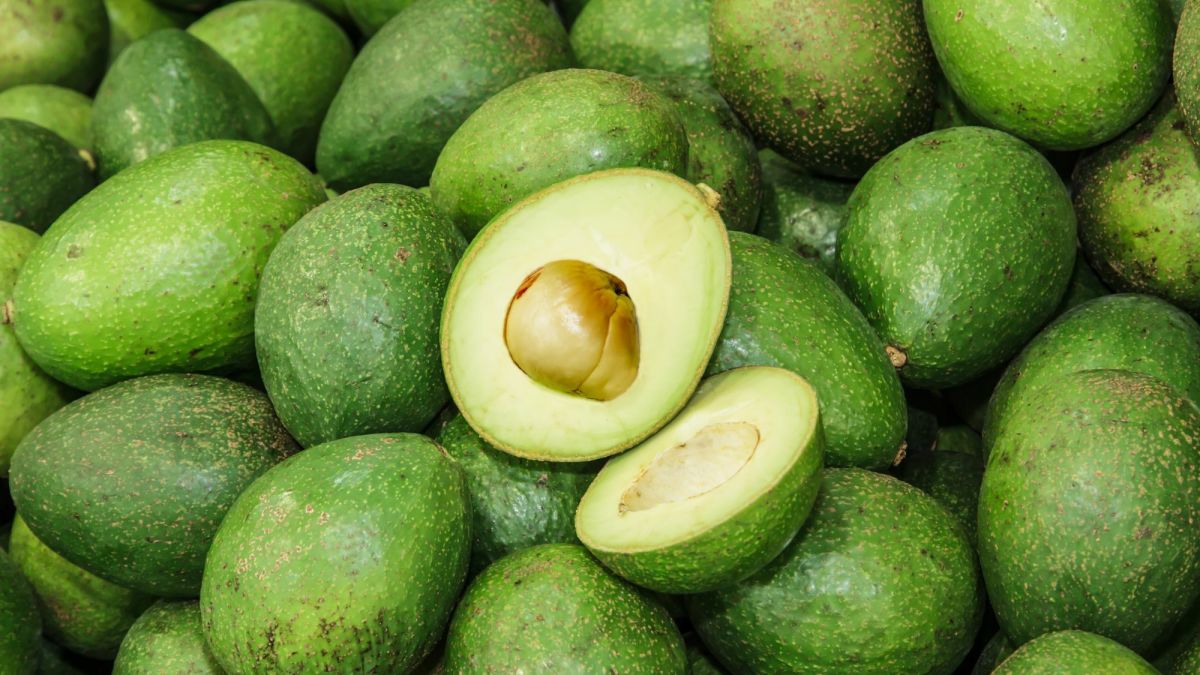Growing an Indoor / Windowsill Potted Herb Garden

How To Grow an Herb Garden in your Windowsill
If you're anything like me, you know that the absolute best way to improve your dishes is to add fresh garden herbs to them. And, of course, the best herbs are the kind that are fresh from the garden.
But what if you don't have any outdoor space? Not a problem, you can still get your greens in an apartment or small home. An indoor herb garden is a great idea for anyone who wants a hobby that pays dividends.
A 'container herb garden', as they're often known, is a manageable, small scale way to produce several healthy crops of your favourite greens and spices to add to your food. It's like a houseplant that you can perpetually harvest and eat!
Many people find the concept of a garden daunting, and I want to reassure you that anyone can manage a small, kitchen herb garden with very little know-how or effort. What's more, you can often keep them going year round.
This article is intended to give you a bunch of great indoor herb garden ideas, and hopefully you'll take the information presented here and run with it! We'll look at several of the best herb kits out there, as well as a few 'DIY' options if you want to save some cash. I'll also offer some suggestions on which plants you might opt to cultivate.
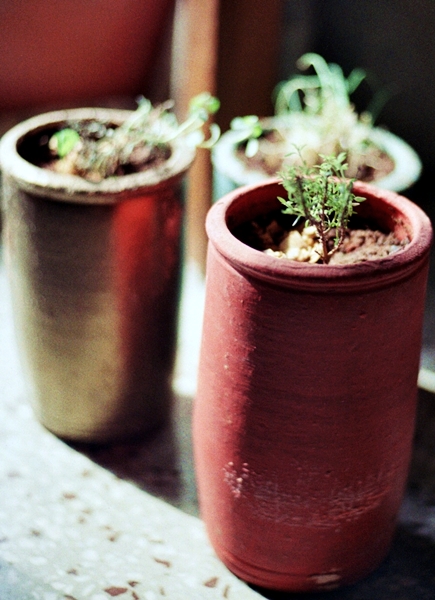
Advice for growing an herb garden in your kitchen window
If you're looking to grow an herb garden indoors, you'll probably want something that is low maintenance, looks pretty, and produces a good yield so your hard work pays off. Here are some tips to help you plan before you buy anything.
Research Your Plants Carefully
When you're choosing plants for your potted home herb garden, be mindful of a few things.
First, make sure that they're plants that your family actually enjoys and will eat. Otherwise you'll end up with an excess of greenery that'll grow out of control or go to waste.
Secondly, make sure the plants are compatible with one another, especially if they're sharing the same pot. Lastly, find out how much yield a particular plant will give, so you can plan meals.
Auxiliary Light?
If you live in a far northern or southern climate, you might not get enough sunlight to feed your plants properly. Even in a sunny clime, you just might not have enough natural light in your home.
Consider going for an herb kit that comes with a lamp, or invest in some grow lights, or in light bulbs with sufficient light for a healthy metabolism. Keep in mind, many plants can subsist off of the light from conventional bulbs, but it's often not enough to thrive.
Aerogarden: A great beginner kitchen herb garden kit for "black thumbs"
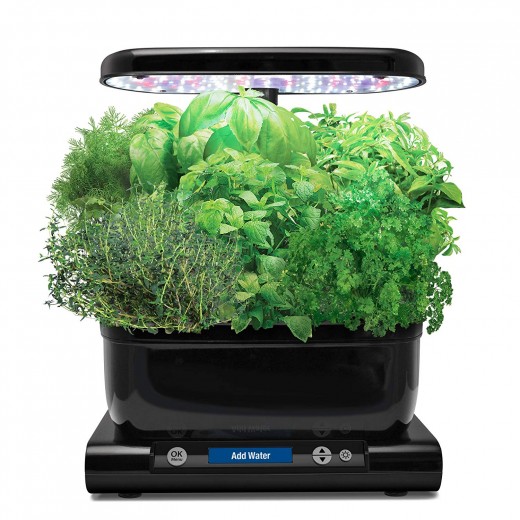
If you're worried about the greenness of your thumb, you might want to start with a kit where a lot of the guesswork is removed. This is a great kit by AeroGrow which can produce a good yield of herbs almost anywhere.
I'd say it's ideal for a kitchen herb grow setup, because it doesn't have to be near a window as it includes a built-in light system.
It's an interesting system: rather than using soil, it makes use of hydroponics, which means that the plant roots go directly into a water reservoir which is enhanced with nutrients. Hydroponics typically results in very swift growth, and a lot of commercial veggie growers take advantage of this technology.
The AeroGrow system really removes the guesswork, because it handles the unknowns for you. It tells you when water needs to be added, when the water level is low, and when the 'pods' used for each plant should be replaced. It also has variable light levels which you can set based on the type of plant you're trying to grow (flowers, herbs, etc).
On the whole, this system is a great little herb garden for your kitchen, and it's best suited to a busy household. It can grow year round, and it has a pretty big following.
Click & Grow: A small indoor garden for hydroponic herbs
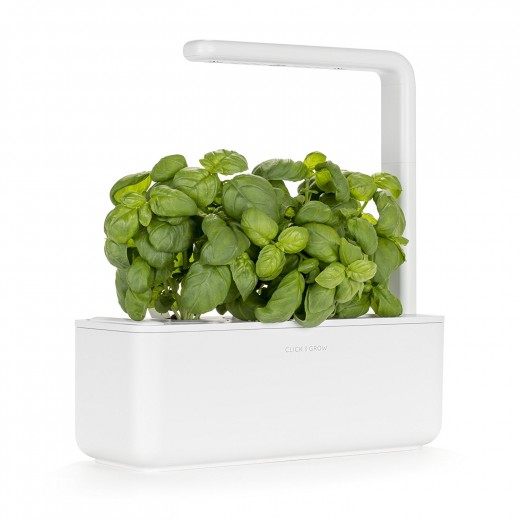
If you're a basil lover like me, you're probably wanting to keep a few plants going at all times. However, it's tough to find a good spot for it, and all the dirt can get pretty messy. This is a great solution. This small hydroponic herb grower by Click and Grow is simple to use, mess free and super cute in your kitchen.
The concept is hydroponic, similar to the one listed above but on a smaller scale. There are three growing chambers which are separated from one another. The system automatically waters the plants, and you can add a nutrient base which removes the need for fresh soil and fertilizer. It will even inform you when you need to top up the water level.
I really like the 'clean' look of this planter, especially with the little grid that the plants poke through. It looks completely at home in a modern kitchen, and it makes harvesting really simple.
You'll be surprised how quickly this planter will produce sprouts under the included LED grow light, it is very efficient.
No bells, no whistles: a more traditional potting system
If you're not a big fan of hydroponics and just want a simple, soil-based herb garden for your home, you're in luck. I have grown many successful indoor herbs with nothing more than a small pot, some good soil and a bit of liquid plant food.
I'm not going to list any examples. A pot is a pot. Choose something with good drainage and enough soil.
I do have a suggestion, however. I've had some bad experiences when I stuck two plants in the same pot. I love the look of single pot gardens, so lush and green. But they don't always work out well!
Some popular herbs are better described by another term: weeds! They can be invasive and aggressive, choking out your other plants and taking over. That's not a bad thing, they're just doing what comes naturally to them. However, it does limit your diversity, and that's frustrating.
Mint, for example, is a very aggressive little plant. It grows quickly and will take over a garden. For that reason, I highly recommend that you separate your herbs with some sort of root impermeable barrier.
Tiered pot systems are easy to assemble and give you a lot of garden real estate in a small footprint. I'd definitely recommend that you trim your plants periodically and re-pot at the end of the season, or they'll become root bound.
Use some liquid plant food and good soil, and you'll have more herbs than you can eat with this awesome system.
Seeds or Seedlings?
Whether you start from seeds or from seedlings is up to you. There are pros and cons to each method.
Seeds
One thing I like about starting from seeds is that you can ensure your plant is healthy the whole way along. If you're starting from seeds, you'll be certain that your soil is clean and free from harmful pests.
What's more, you can plant strategically, or you can sprinkle them around for a more natural look. It gives you more control over the spread of your garden.
Seeds take a bit longer to get growing, so you'll have to have a bit more patience. That being said, most herbs grow quite quickly and you'll see sprouts almost right away, especially with a hydroponic system.
Kids love to watch seedlings poke up through the soil, so it's a fun family project too!
Seedlings:
Seedlings are a great choice because they are already on their way. You don't have to wait as long, and you can have a pretty herb garden almost straight away.
Seedlings come with some drawbacks. You often have no idea if they're infected with pests or plant diseases until later on. They are not always grown in an organic fashion.
Also, seedlings often can't be used with a hydroponic system. Both of the systems above are incompatible with seedlings for a few reasons. You're usually better off to start from the seed when you're using hydroponics.
When & How to Harvest Your Potted Herb Garden
Be patient at first: When can you harvest your kitchen herb planter? That's pretty much up to you. I'd wait until the plant is mature enough to weather some clippings without impeding growth. The key is waiting for the roots. A lot of herbs will grow all the way back from nothing provided the root system is robust.
Trim from the top: When you're trimming herbs to eat, I'd generally recommend that you trim from the top. You might be tempted to trim from the sides, but this usually results in a spindly plant that grows upwards rather than out.
In most cases, wherever you trim will split and grow in two new directions, so your plants will naturally become bushier and produce more vegetation over time. Don't fret too much if a particular plant doesn't make it. Just re-plant and start over again, you'll get the hang of it.
Let me know what you ended up growing! Thanks for reading.

